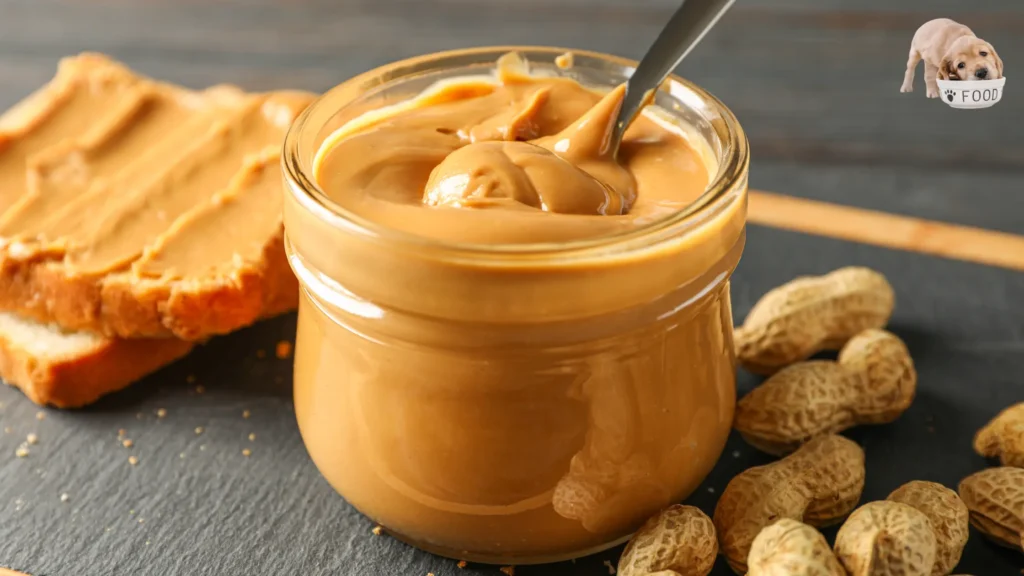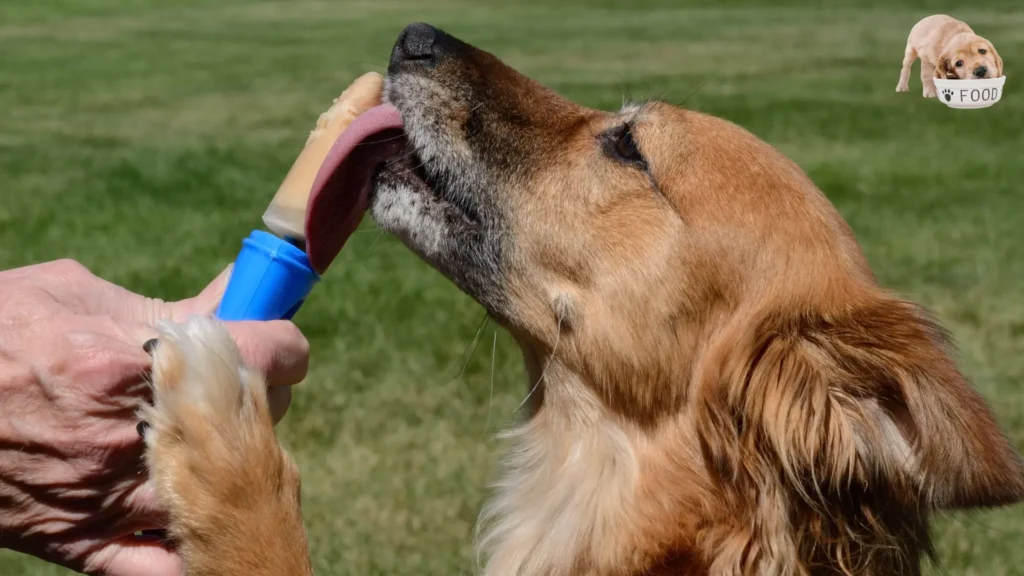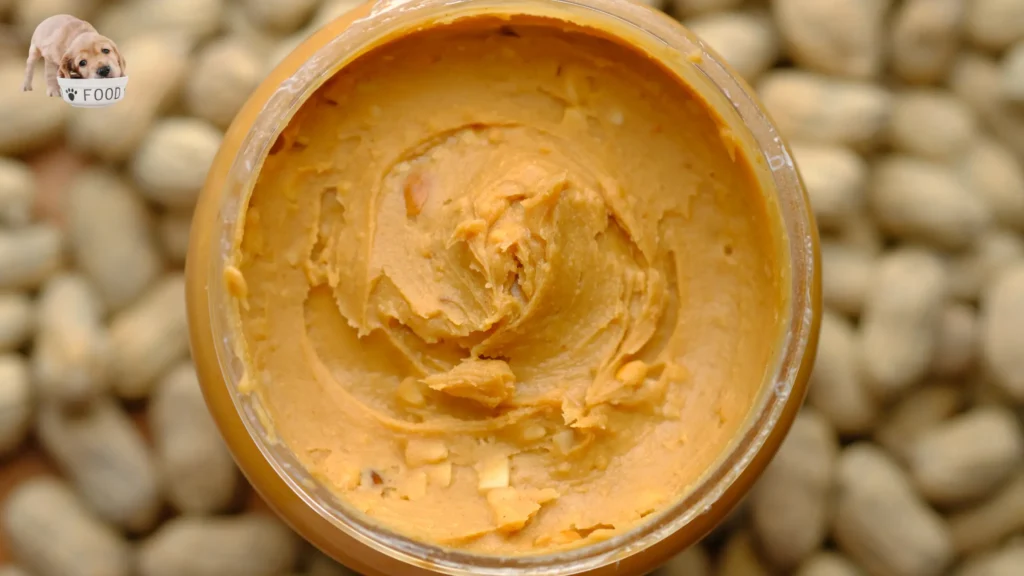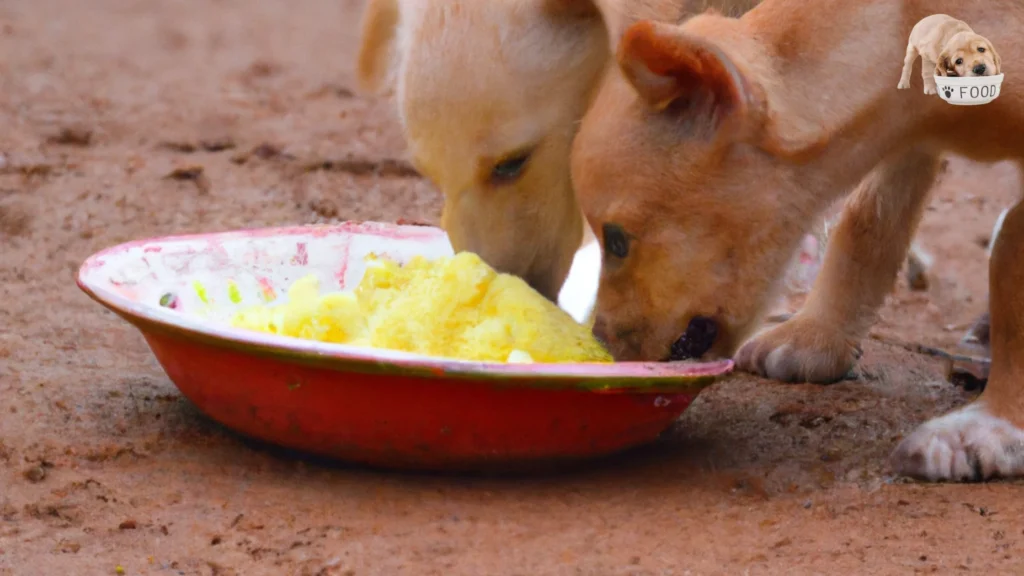In the nutty debate of ‘Can Dogs Eat Peanuts,’ find answers here! We break down the nutritional aspects, potential allergies, and offer guidance on how to treat your dog to peanuts safely

Dogs, our loyal companions, often find themselves gazing longingly at our snacks, especially when we’re indulging in the crunchy goodness of peanuts. As a responsible pet owner, it’s natural to wonder whether it’s safe to share this popular human treat with our furry friends. In this comprehensive article, we’ll delve into the intricacies of whether dogs can eat peanuts, exploring their nutritional benefits, potential risks, and everything in between.
Introduction of Can Dogs Eat Peanuts or not

A. Brief overview of the topic
Peanuts, being a staple in many households, raise questions about their suitability for canine consumption. This article aims to provide clarity on the safety and implications of feeding peanuts to dogs.
B. Importance of understanding what dogs can eat
A dog’s diet significantly impacts its health and well-being. Knowing the dos and don’ts of their nutritional intake ensures a happy and healthy life for our four-legged companions.
Nutritional Composition of Peanuts
A. Macronutrients in peanuts
Peanuts boast a rich nutritional profile, containing essential macronutrients such as proteins, fats, and carbohydrates. Understanding these components is crucial in evaluating their suitability for canine consumption.
B. Micronutrients present
Beyond macronutrients, peanuts house a spectrum of micronutrients like vitamins and minerals. We’ll explore how these contribute to a dog’s overall health.
C. Calories and potential impact on dogs
Considering the caloric content of peanuts is vital to prevent overfeeding, a common pitfall that could lead to weight-related issues in dogs.
Benefits of Peanuts for Dogs

A. Rich source of protein
Protein is a fundamental building block for dogs, promoting muscle growth and overall vitality. Discover how peanuts can contribute to meeting a dog’s protein requirements.
B. Healthy fats content
Healthy fats play a crucial role in a dog’s diet, influencing coat health and supporting various bodily functions. We’ll examine the types of fats found in peanuts and their benefits.
C. Vitamins and minerals in peanuts
Peanuts aren’t just tasty; they pack a punch of essential vitamins and minerals. Uncover how these micronutrients can enhance a dog’s well-being.
Risks Associated with Dogs Consuming Peanuts

A. Allergic reactions
Allergies are a concern when introducing any new food to a dog’s diet. We’ll explore the signs of peanut allergies and how to address them promptly.
B. Choking hazards
The size and texture of peanuts pose a potential choking hazard for dogs. Learn how to minimize this risk when incorporating peanuts into their diet.
C. Digestive issues
Peanuts can be hard to digest for some dogs, leading to gastrointestinal discomfort. We’ll discuss precautions to take to prevent digestive issues.
Types of Peanuts Safe for Dogs
A. Raw vs. roasted peanuts
The preparation of peanuts can influence their safety for dogs. Delve into the differences between raw and roasted peanuts and their impact on canine health.
B. Unsalted vs. salted peanuts
While peanuts themselves are generally safe, the additives used in their preparation can be problematic. Understand the implications of salted peanuts on a dog’s well-being.
C. Peanut butter considerations
Peanut butter is a popular treat for dogs, but not all varieties are created equal. Discover what to look for when choosing peanut butter for your furry friend.
Moderation in Feeding Peanuts to Dogs
A. Recommended serving sizes
Like any treat, moderation is key. Learn the ideal serving sizes of peanuts to avoid overindulgence and its associated risks.
B. Frequency of peanut consumption
How often can dogs safely enjoy peanuts? We’ll explore the frequency at which peanuts can be incorporated into a dog’s diet without adverse effects.
C. Monitoring for adverse effects
Understanding how a dog’s body reacts to peanuts requires vigilant observation. We’ll discuss the signs that indicate a need for adjustments in their peanut intake.
Signs of Allergic Reactions in Dogs
A. Common symptoms
Allergic reactions can manifest in various ways. Familiarize yourself with the common symptoms that may indicate a peanut allergy in dogs.
B. Immediate actions to take
Knowing how to respond swiftly is crucial when an allergic reaction occurs. Discover the immediate actions to take to ensure your dog’s well-being.
C. Seeking veterinary help
When in doubt, consulting a veterinarian is paramount. We’ll outline when and why professional guidance is necessary in cases of peanut allergies.
Precautions for Feeding Peanuts to Dogs
A. Checking for allergies beforehand
Before introducing peanuts, a precautionary allergy check is advisable. Learn how to conduct a simple test to gauge your dog’s sensitivity.
B. Introducing peanuts gradually
Abrupt dietary changes can be jarring for a dog’s system. Find out how to introduce peanuts gradually to acclimate your dog to this new treat.
C. Avoiding certain peanut products
Not all peanut products are safe for dogs. We’ll highlight specific items to avoid to prevent unintended health issues.
Alternatives to Peanuts for Dog Treats
A. Nutritional alternatives
Explore alternative treats that offer nutritional benefits similar to peanuts, providing variety in your dog’s diet.
B. Homemade dog treats recipes
For the culinary enthusiasts, we’ll share easy-to-make, peanut-free treat recipes that your dog will love.
C. Commercial dog treats
Not all commercial treats are created equal. Discover how to choose high-quality, safe treats for your dog from the vast array available in the market.
Peanuts in Commercial Dog Food
A. Reading ingredient labels
Understanding how to decipher ingredient labels ensures that the commercial dog food you choose is free from harmful peanut-related additives.
B. Understanding processing methods
The processing methods used in dog food can impact its nutritional value. Uncover the significance of processing when evaluating peanut content.
C. Consulting with a veterinarian
When in doubt about the suitability of commercial dog food containing peanuts, seek professional advice from a veterinarian.
Famous Dogs and Their Love for Peanuts
A. Anecdotes and stories
Dive into heartwarming anecdotes and stories about famous dogs who have had a special affinity for peanuts.
B. Positive experiences
Explore instances where peanuts have positively impacted the lives and health of beloved canine companions.
C. Celebrity endorsements
Discover if any celebrities advocate for including peanuts in a dog’s diet and the reasons behind their endorsements.
Studies and Research on Dogs and Peanuts
A. Scientific findings
Examine the scientific studies that shed light on the relationship between dogs and peanuts, providing evidence-based insights.
B. Veterinary perspectives
Understand how veterinarians view the incorporation of peanuts into a dog’s diet, considering both risks and potential benefits.
C. Ongoing research areas
Stay informed about current research areas exploring the broader aspects of canine nutrition and the role peanuts play in it.
Historical Perspective on Dogs and Peanuts
A. Traditional uses of peanuts in dog diets
Take a trip through history to explore how peanuts have been a part of dogs’ diets in different cultures.
B. Evolution of peanut consumption by dogs
Trace the evolution of peanut consumption by dogs and how it has changed over the years.
C. Cultural significance
Examine the cultural significance of peanuts in relation to dogs and how it has influenced perceptions and practices.
Addressing Common Myths about Dogs and Peanuts
A. Clarifying misconceptions
Dispelling common myths that may create confusion about the safety and benefits of feeding peanuts to dogs.
B. Debunking popular myths
Dig deeper into popular misconceptions and debunk them with factual information supported by experts.
C. Evidence-based insights
Provide evidence-based insights to support the information shared, ensuring accuracy and reliability for the readers.
Peanut Products to Avoid Giving to Dogs
A. Peanut-related snacks
Identify specific peanut-related snacks that should be strictly avoided due to potential harm to dogs.
B. Seasoned or flavored peanuts
Understand the risks associated with seasoned or flavored peanuts and why they may not be suitable for canine consumption.
C. Peanut-containing foods toxic to dogs
Highlight certain peanut-containing foods that can be toxic to dogs, necessitating strict avoidance.
Veterinary Opinions on Dogs and Peanuts
A. Expert viewpoints
Explore the viewpoints of veterinary experts on the subject, gaining valuable insights into the considerations and concerns they may have.
B. Common concerns raised by veterinarians
Understand the common concerns raised by veterinarians regarding feeding peanuts to dogs and how these concerns can be addressed.
C. Professional recommendations
Summarize the professional recommendations provided by veterinarians for safely incorporating peanuts into a dog’s diet.
Legal and Ethical Considerations
A. Regulations on pet food ingredients
Examine existing regulations governing pet food ingredients and how these may impact the inclusion of peanuts.
B. Ethical sourcing of peanuts for pets
Consider the ethical aspects of sourcing peanuts for pet consumption and the responsibility pet owners bear in ensuring ethical practices.
C. Responsible pet ownership
Emphasize the importance of responsible pet ownership, which includes making informed decisions about a dog’s diet and well-being.
Peanut Treat Recipes for Dogs
A. DIY peanut treats
Provide easy-to-follow recipes for homemade peanut treats, allowing pet owners to indulge their dogs responsibly.
B. Nutritional value of homemade treats
Discuss the nutritional value of homemade treats, showcasing the benefits of incorporating them into a dog’s diet.
C. Ensuring safety in preparation
Offer tips and guidelines to ensure the safety of both pets and pet owners during the preparation of homemade peanut treats.
Real-life Experiences of Dog Owners
A. Testimonials on feeding peanuts
Share testimonials from dog owners who have introduced peanuts into their dogs’ diets, capturing diverse experiences.
B. Challenges faced
Highlight any challenges faced by dog owners in incorporating peanuts, providing practical insights for overcoming such obstacles.
C. Success stories
Celebrate success stories where dogs have thrived with the inclusion of peanuts, emphasizing the positive impact on their health.
FAQ for Can dogs eat peanuts
Can dogs eat peanuts?
A1: Yes, dogs can eat peanuts in moderation. They are a good source of protein and healthy fats. However, there are precautions to consider.
Are all types of peanuts safe for dogs?
A2: Stick to unsalted, dry-roasted, or raw peanuts. Avoid flavored or salted varieties, as excessive salt and additives can be harmful to dogs.
What are the potential benefits of feeding peanuts to dogs?
A3: Peanuts offer protein, healthy fats, and some vitamins. They can be a tasty and nutritious treat when given in moderation.
Can peanuts pose any risks to dogs?
A4: Yes, peanuts can be a choking hazard, and some dogs may be allergic. Monitor for signs of allergies, and always shell peanuts to prevent choking.
How should I introduce peanuts to my dog’s diet?
A5: Start with small amounts to check for any adverse reactions. Monitor your dog closely, and consult your vet if you notice any digestive issues or allergies.
Can I give my dog peanut butter instead?
A6: Yes, but choose natural, unsalted peanut butter without added sugars or xylitol. Xylitol is toxic to dogs and should be avoided.
What signs indicate that my dog might be allergic to peanuts?
A7: Watch for symptoms like itching, swelling, vomiting, diarrhea, or difficulty breathing. If you observe any of these signs, contact your vet immediately.
How much peanut is safe for my dog?
A8: Treat peanuts as an occasional snack. Too many can lead to obesity and other health issues. Consult your vet for specific guidance based on your dog’s size and health.
Can puppies eat peanuts?
A9: Introduce peanuts gradually and in small amounts to puppies. Their digestive systems are still developing, so monitor them closely for any adverse reactions.
What should I do if my dog accidentally eats too many peanuts?
A10: If you suspect your dog has consumed an excessive amount of peanuts, contact your vet. Excessive consumption can lead to digestive issues and other health concerns.
Why can’t dogs eat peanuts?
A11: Dogs can eat peanuts, but caution is advised due to potential choking hazards and digestibility concerns. The hard texture of whole peanuts can pose a risk, especially for smaller breeds.
What are the dangers of dogs eating whole peanuts?
A12: Whole peanuts can be a choking hazard and may be difficult for dogs to digest. The risk is higher in smaller dogs, making it advisable to opt for safer alternatives like peanut butter.
Can dogs be allergic to peanuts?
A13: Yes, some dogs can be allergic to peanuts. The allergens are primarily found in the protein-packed part of the peanut. It’s essential to monitor your dog for any signs of allergies when introducing peanuts into their diet.
Why can dogs eat peanut butter, but not peanuts?
A14: Peanut butter is preferred over whole peanuts for several reasons. It eliminates the choking hazard, has a smoother texture for easier consumption, and undergoes processing that aids in digestion.
What makes peanut butter more suitable for dogs?
A15: Peanut butter’s creamy texture and flavor make it enticing for dogs. Additionally, the processing it undergoes breaks down the peanuts, making it easier for dogs to digest without the potential complications associated with whole peanuts.
Is there a difference in allergen levels between peanuts and peanut butter?
A16: Yes, the allergens are generally more concentrated in the protein-packed part of the peanut. Peanut butter, especially natural, unsweetened varieties, tends to have fewer allergens, making it a safer choice.
Can dogs consume any type of peanut butter?
A17: Dogs can eat natural, unsweetened peanut butter without xylitol. Xylitol is a sugar substitute that is toxic to dogs and can be found in some peanut butter brands. Always check the ingredients before offering it to your dog.
Can dogs eat fruits?
A: Yes, many fruits are safe and healthy for dogs. Some popular options include apples (without seeds), blueberries, mango, strawberries, and watermelon (seedless). However, it’s crucial to avoid fruits like grapes and raisins, as they can be toxic to dogs. Always remove pits and seeds, and introduce new fruits gradually to monitor for any adverse reactions. Consult with your veterinarian to ensure the fruits you offer align with your dog’s specific dietary needs.
Conclusion
While dogs can enjoy peanut butter as a tasty and safe treat, providing whole peanuts requires careful consideration of potential risks. Always monitor your dog’s reaction to new foods and consult with your veterinarian for personalized dietary advice.
A. Summarizing key points
Provide a concise summary of the key points discussed throughout the article, reinforcing crucial takeaways for readers.
B. Final thoughts on dogs and peanuts
Offer final reflections on the broader relationship between dogs and peanuts, leaving readers with thoughtful considerations.
Any query feel free to contact.
